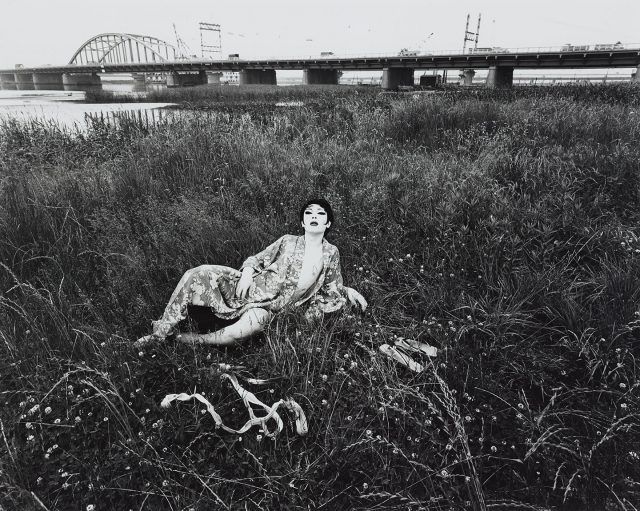The Freer Gallery of Art and Arthur M. Sackler Gallery is home to delicate pieces from ancient Iran, Korea and China. Cambodian artwork and Tibetan Buddhist shrines are held in quiet reverie. But tucked in an even more unassuming corner of the building’s basement is one striking new exhibit.
“Japan Modern: Photography from the Gloria Katz and Willard Huyck Collection” is a temporary exhibit of modern Japanese photography, ranging from eerie videos of modern life set to American rock music, to nostalgic reflections on country traditions. Photography is just one way 20th-century artists caught the sweeping transformation of Japan’s culture and geography.
Some photos capture the Japanese countryside, untouched by change or unmarred by Westernization. “Master of twentieth-century photography” Eikoh Hosoe captured images of rural Japanese people in a collection called Kamaitachi, named after the mischievous folk-legend creature from his childhood. Artist Hamaya Hiroshi took to photographing rural communities as a way to escape the “vanity, chaos, and constructive energy” of modern urban life.
But as was the case for the Japanese as a whole, many photographers of the modern Japanese age were unable to find the innocence of their youth. Traumatized by years of American occupation and the aftermath of the atomic bombings of Hiroshima and Nagasaki, photographers captured absolute desolation.
With no way to escape the fallout of total devastation, scenes of families and children in a war wasteland pervaded the exhibit, shown decades after the war was supposed to end. Much of the exhibit is dedicated to the capturing of American military bases, street children, and abject urban poverty that rolled in with the bloodshed of World War II and did not leave afterward.
The exhibit is a well-hidden treasure of the gallery, dedicated to the preservation of Asian art. “Japan Modern” preserves an incredible transition when, after many generations, the lifestyle of Japanese people was rapidly — and radically — changed. The collection evokes a sense of longing for the past and uncertainty of what is to remain. But there is hope in these photos as well.
The path to move forward from the trauma of war, and to find a way to embrace modern life through a new form of art which could tell these photographers stories. There is the hope and desire to find meaning, and to merge tradition and innovation in order to celebrate Japan, its history and its resilience.
The exhibit will be on display at the Freer Gallery daily until Jan. 24.



